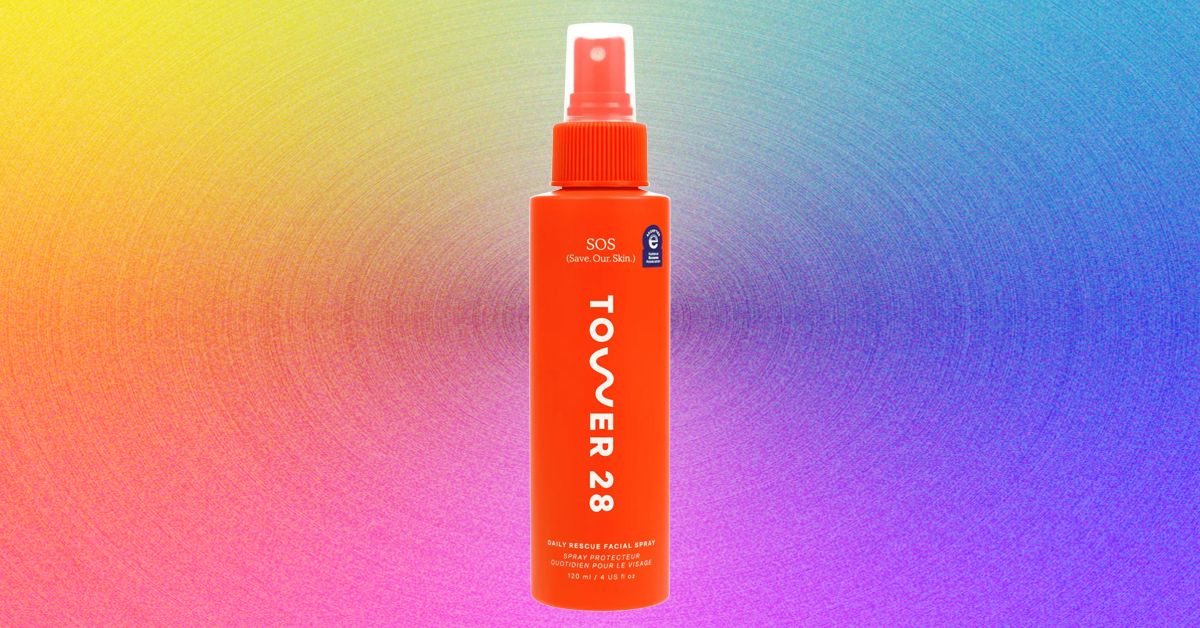Skincare has a way of taking the body’s own biology, bottling it, and selling it back to us. Hypochlorous acid (HOCl) is the latest example. It’s a weak acid that your white blood cells naturally produce to fight infection and kill bacteria. Now it’s being spritzed across morning and nighttime routines as an all-around skin fix.
But HOCl isn’t new. Hospitals have been using synthetic versions for decades as a disinfectant. In fact, the lab-made form dates back to 1834 and was used in both World Wars. So while #SkinTok makes it sound like a cutting-edge discovery, dermatologists have known its potential for a long time.
Here’s what it is, how it works, and what dermatologists want you to know before adding it to your skincare routine.
Table of Contents
Hypochlorous Acid, Clarified
Chemically, HOCl is a weak acid and a potent oxidant. The body produces it during an immune response, but it can also be synthesized in a lab by running an electric current through saltwater. This synthetic version was first developed in 1834, used as a disinfectant during both World Wars, and has long been employed in hospitals for wound care and even in veterinary medicine.
Unlike harsher disinfectants like bleach, HOCl is biodegradable, nontoxic, and free of noxious fumes. Actually, research shows it can kill certain bacteria faster than bleach. In skincare, it’s bottled at ultra-low, stabilized concentrations. “Think of it as your skin’s built-in defense mechanism, bottled,” writes Dr. Mollie Kelly Tufman, molecular biologist and founder of the Beauty Lab.
Why It’s In Skincare
Dermatologists have used HOCl for decades to prevent infection, keep wounds clean, and reduce scarring. Early research suggests potential in treating acne vulgaris, seborrheic dermatitis, and tumor suppression. More recently, it’s popped up as topical sprays and mists, promising to calm breakouts and soothe redness.
Its appeal comes from its antimicrobial and anti-inflammatory properties. HOCl neutralizes acne-causing bacteria and other microorganisms that trigger flare-ups. “Compared to niacinamide, which works gradually to regulate oil and support your barrier, HOCl is more of a first responder,” writes Tufman. “It shows up fast, calms things down, and makes recovery easier for irritated or breakout-prone skin.”
“Benzoyl peroxide also has antimicrobial effects, but it can be a lot more drying and irritating, so it can lead to rashes or dermatitis,” says board-certified dermatologist Gloria Lin, MD. HOCl, by contrast, is gentle enough for sensitive skin and safe for conditions like eczema, psoriasis, or rosacea. Plus, unlike benzoyl peroxide, it won’t bleach your clothes or towels.
It’s effective for reducing bacteria from helmets, masks, makeup brushes, and sweaty gym gear. Some people spritz it under their arms or on their feet for a quick refresh (though it won’t replace deodorant). In eye care, HOCl is used to help with dry eyes, styes, and conditions like blepharitis and meibomian gland dysfunction (MGD). It can also reduce microbial buildup around the lashes and eyelids.
The Caveats
There are limits. Because it’s an oxidizer, it can interfere with ingredients like vitamin C and other antioxidants. If both are in your regimen, dermatologists suggest spacing them out (vitamin C in the morning, HOCl at night). Lin also says highly acidic exfoliants like strong AHAs can disrupt HOCl’s pH.
Stability is another concern. HOCl breaks down when exposed to light, heat, or poor packaging, so most products come in opaque bottles with stabilizers. Store in a cool spot. Don’t pour it into a different container; the molecule degrades once transferred.




Comment ×